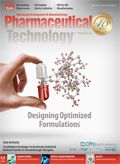Developing cannabis-based therapeutics
David Fulper, PhD, director of technology support at Catalent, shares insights on the challenges and opportunities for cannabis-based therapeutics.
David Fulper, PhD, director of technology support at Catalent, shares insights on the challenges and opportunities for cannabis-based therapeutics.
PharmTech: Why is there an interest in cannabis-based therapeutics?
Fulper (Catalent): The discovery of endogenous cannabinoid receptors has led to studies to investigate the potential effects of cannabinoids in the treatment of diseases such as cancer, diabetes, and neuromuscular disorders. There are potential benefits in pain relief, for use as a muscle relaxant, and for nausea and loss of appetite. With further research and studies, it is possible cannabis could help in the treatment of cancer, HIV, arthritis, multiple sclerosis, and other medical conditions. Movements by individual US states to legalize the medical use of cannabis also have created a medicinal market and significant interest.
PharmTech: Could you tell us more about the physicochemical properties of cannabis and the challenges in formulation development?
Fulper (Catalent): Cannabinoids are typically highly lipophilic compounds with poor solubility. Tetrahydrocannabinol (THC) exists as a viscous, oily resin that is oxygen-sensitive and requires special handling and formulation considerations to provide adequate stability. Other cannabinoids can exist in a crystalline state, but are often administered with THC or cannabis entourage materials that, again, result in an oily liquid. As a plant extract, there is also the challenge of standardization of cannabis content to assure consistent dosing. Lastly, cannabis’ status as a Drug Enforcement Agency (DEA) Schedule I drug greatly complicates working with these compounds, making it much more difficult to perform formulation studies compared to other compounds.
PharmTech: In the European Union, there are cannabinoids currently available as pharmaceutical formulations. Are there any limitations with these marketed formulations? Do you see a need for an improved dosage form?
Fulper (Catalent): Oral THC formulations generally suffer from poor or variable bioavailability due to first-pass metabolism. Disease state can also play a role in the type of delivery profile desired. Some of these issues can be addressed by route of delivery. GW Pharmaceuticals’ Sativex oromucosal spray attempts to avoid first-pass metabolism through absorption via the lining of the mouth. Teva has signed a marketing agreement with Syqe Medical to distribute Syqe’s high-tech vaporizing inhaler (Syqe Inhaler), which, similar to vaping, avoids first-pass metabolism and has a fast onset of action. There is also interest in topical and suppository formulations. However, there will always be a desire and need for oral cannabis, and lipid-based formulations are considered as a top choice due to the lipophilic nature of cannabinoids. Additional work is still needed to further improve the oral performance.
PharmTech: What is a suitable drug-delivery approach for cannabis-based therapeutics? What would you consider an effective formulation to deliver cannabis molecules?
Fulper (Catalent): Formulation development can be complicated, as cannabis-based therapeutics could include a single entity API, a combination of APIs, an API in combination with entourage materials, or as the plant extract. Disease states also could include situations where it would be desirable to allow the patient the ability to titrate their dose. Cannabis has a history of being delivered by smoking, and while this route of administration can effectively deliver cannabis, it also brings with it a number of undesired consequences, including concerns that this delivery route may be carcinogenic and that it may damage the lung’s epithelia over time; a regulator will, therefore, want to ensure that these concerns have been adequately addressed in any cannabis formulation. As a result, there is a strong desire to develop oral dosage forms to avoid the negative effects of smoking or vaporization. For any given API scenario, there will be various delivery approaches that will make more sense than others based on the disease being treated, patient needs, absorption, distribution, metabolism, and excretion (ADME) characteristics, and regulatory acceptance.
PharmTech: There is evidence that fats and lipid excipients can increase systemic exposure to orally administered cannabis--can you discuss exploiting this pathway in formulation development?
Fulper (Catalent): Natural cannabinoids tend to fall into the Developability Classification System (DCS) IIb category where lipid formulations are known to improve absorption. Good absorption, however, does not always translate into sufficient systemic exposure. Gershkovich et al. showed that a formulation that promoted lymphatic absorption significantly increased the bioavailability of the synthetic cannabinoid PRS-211,220 from 13% to 35%, compared with dexanabinol using long-chain triglyceride formulations (1). THC is highly metabolized by the liver and could benefit from formulations that promote lymphatic absorption and, by doing so, avoid first pass metabolism. More work is needed to be able to screen compounds for lymphatic absorption and to optimize formulation systems for lymphatic absorption.
Reference
1. Gershkovich et al., Eur. J. Pharm. Sci. 31 (5) 298 - 301 (2007).
Article Details
Pharmaceutical Technology
Vol. 41, No. 4
Pages: 21
Citation
When referring to this article, please cite it as A. Siew, "Developing cannabis-based therapeutics” sidebar to “Designing Optimized Formulations," Pharmaceutical Technology 41 (4) 2017.

Drug Solutions Podcast: A Closer Look at mRNA in Oncology and Vaccines
April 30th 2024In this episode fo the Drug Solutions Podcast, etherna’s vice-president of Technology and Innovation, Stefaan De Koker, discusses the merits and challenges of using mRNA as the foundation for therapeutics in oncology as well as for vaccines.
Drug Solutions Podcast: Applying Appropriate Analytics to Drug Development
March 26th 2024In this episode of the Drug Solutions Podcast, Jan Bekker, Vice President of Business Development, Commercial and Technical Operations at BioCina, discusses the latest analytical tools and their applications in the drug development market.
INTERPHEX 2025: Use of Walk-In Chambers for Bio/Pharma Development and Manufacturing
April 2nd 2025Sitting down with the PharmTech Group at INTERPHEX 2025, Christopher Murphy, director of Global Business Development and Service Customer Support at Environmental Specialties, discusses the design and critical role of walk-in chambers in the bio/pharmaceutical industry.